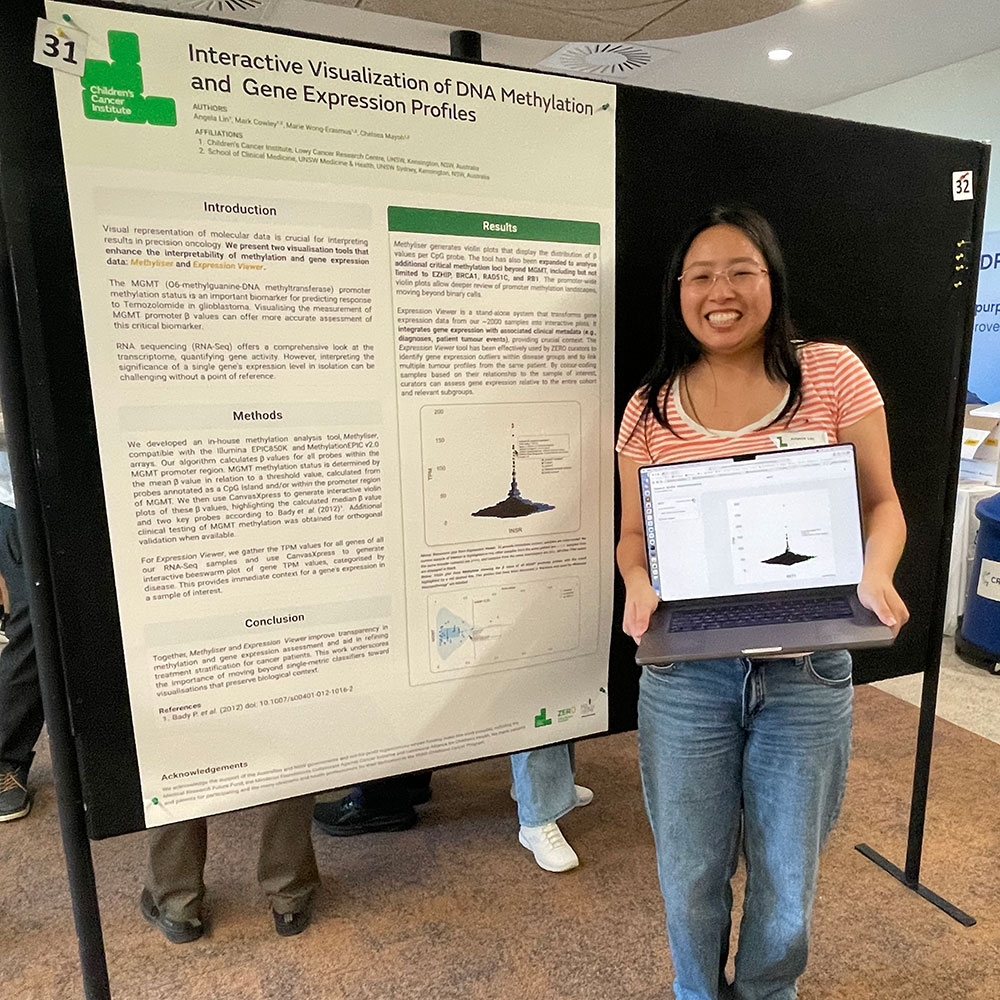One of the great success stories in modern medicine is the dramatic improvement in survival of children with leukaemia. A death sentence 60 years ago, today more than 80% of children with leukaemia survive.
Leukaemia is a cancer where a person’s body accumulates large numbers of abnormal white blood cells. This affects production of the other blood cells – red blood cells (that carry oxygen), normal white cells (that fight infection) and platelets (that help clot blood). Symptoms include fatigue, susceptibility to infection, bruising and bleeding. Unlike neuroblastoma which is almost exclusively a childhood cancer, leukaemia occurs in both adults and children. In children, it is the most common cancer (about one third of all malignancies) and causes the greatest number of cancer-related deaths. While overall survival rates for childhood leukaemia are high, leukaemia is ‘heterogeneous’ – it has many types and subtypes, some of which are less responsive to therapy and more likely to relapse, eg T-cell acute lymphoblastic leukaemia (T-ALL). Treatments for leukaemia include chemotherapy, radiation therapy, immunotherapy and bone marrow transplantation. The most common childhood leukaemia is acute lymphoblastic leukaemia (ALL). Each year, around 150 Australian children and almost as many adults are diagnosed with ALL.
Our research
Our Leukaemia Biology Program is investigating how childhood leukaemia develops resistance to conventional chemotherapeutic drugs, how new drugs can be rapidly tested and prioritised for clinical trials, and how novel targets can be identified to develop a new generation of more effective and specific drugs to treat leukaemia. For example, one of the most active classes of drugs used to treat childhood ALL is the glucocorticoids. Unfortunately some children develop resistance to these drugs, leading to treatment failure. We’re investigating causes of glucocorticoid resistance and developing a new class of drugs able to reverse it.
Pediatric Preclinical Testing Consortium
Children’s Cancer Institute is the leukaemia testing site for the Pediatric Preclinical Testing Consortium, supported by the US National Cancer Institute. We generate high-quality preclinical data to prioritise therapies using a successful model developed here by Professor Lock and his team. Several drugs we have prioritised have been accelerated into clinical trials for children with leukaemia. One of the most promising drugs to come out of the testing program to date is PR-104 which is being investigated further in our labs. We found last year that PR-104 was especially effective against aggressive T-ALL. More recently venetoclax, an Australian-developed drug for adult leukaemia, was tested for paediatric leukaemias.
Minimal residual disease testing and research
More than 85% of children with acute lymphoblastic leukaemia (ALL) can be cured. While clinical remission is achieved initially in almost 100% of patients, about a fifth later relapse due to the persistence of small numbers of cancer cells throughout treatment (‘minimal residual disease’ or MRD). MRD testing, with appropriate follow up treatment, has halved the relapse rate in high risk children and is now ‘standard of care’ for children diagnosed with ALL – nationally and internationally. Almost all current clinical trials for ALL depend on MRD measurements to determine each child’s risk of relapse and subsequent treatment. We’ve developed one of the best methods to measure MRD for ALL patients and now provide MRD diagnostic testing for ALL patients enrolled on several clinical trials. We also carry out research to further improve our ability to predict risk of relapse. Read more about MRD testing and clinical trials.
Personalised medicine for leukaemia
A national clinical trial involving 120 children with the most serious cases of infant, childhood and adolescent cancer, including children with leukaemia, will open in 2017 as part of the Zero Childhood Cancer national personalised medicine program. A flagship initiative of Children’s Cancer Institute and the Sydney Children’s Hospitals Network, the program is presently in a pilot stage.
Meet a researcher

Professor Richard Lock heads up our Leukaemia Biology research program. Soon after you read this, Richard’s hair could be a lovely, grassy shade of green. Our Dare the Boss campaign has seen him take on a challenge from his team to raise funds for childhood cancer research by dyeing his hair.















